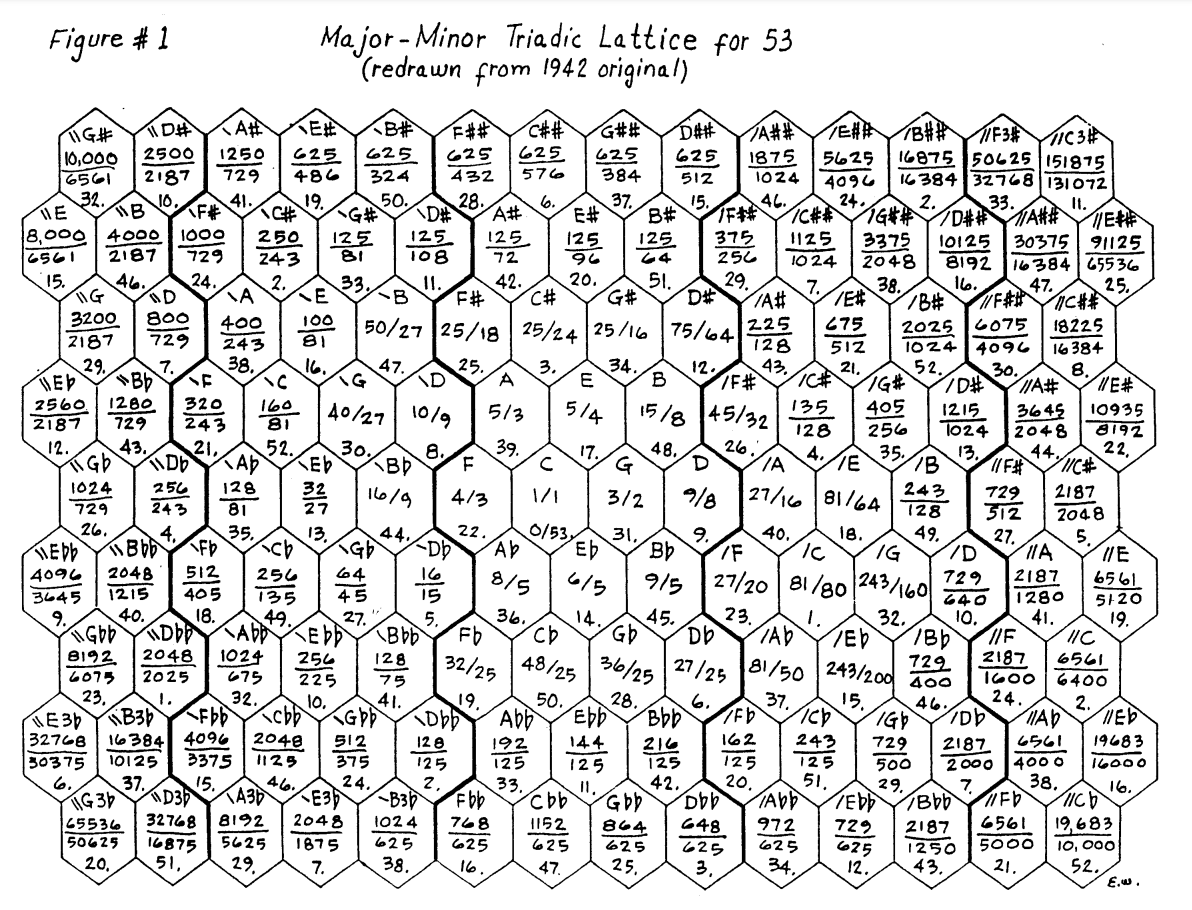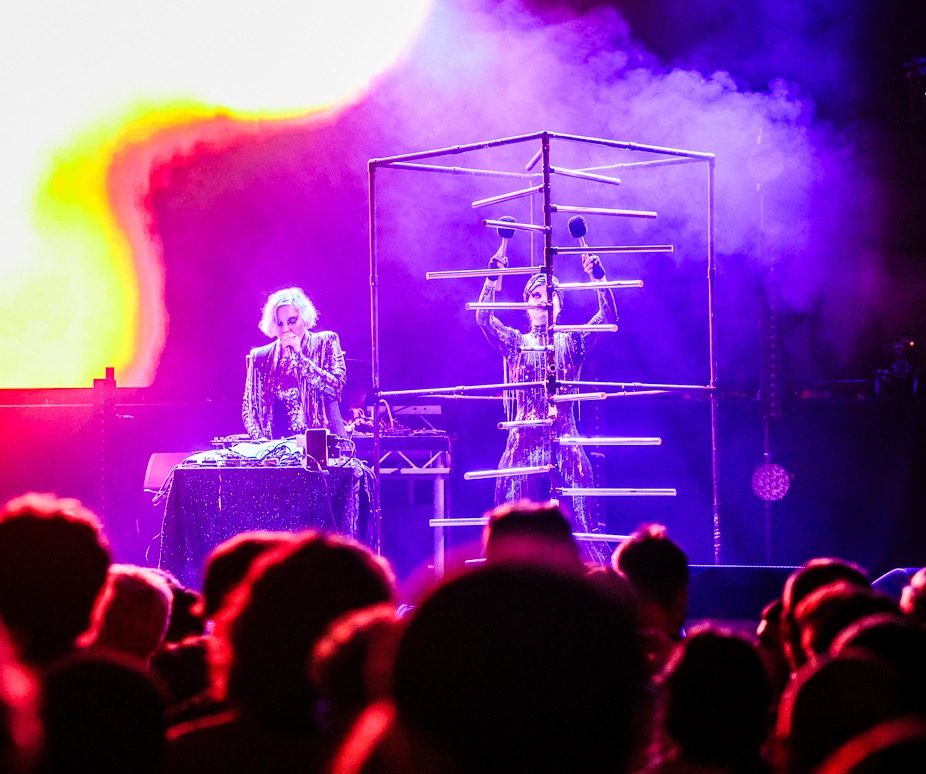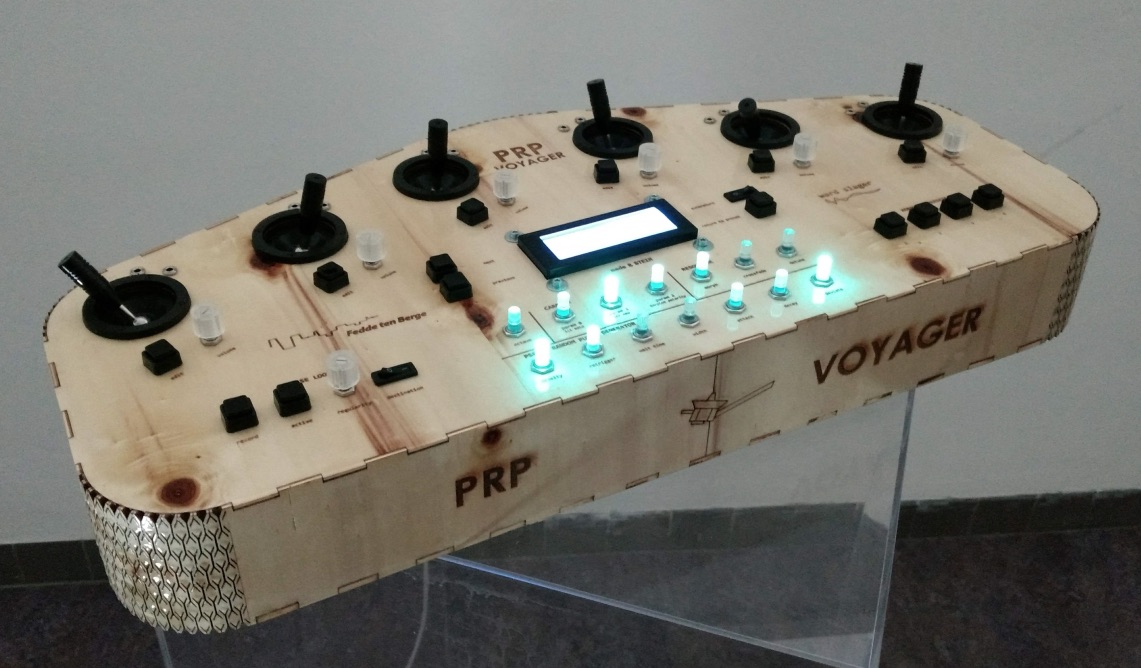Design for microtonality
Neod is a new instrument with 53 pitches per octave
As modern listeners our ears have become accustomed to harmony based on equal temperament which divides the octave into 12 mostly equal parts. In this blog post we present neod created by Erik Natanael Gustafsson, a musical instrument which explores mathematical structures of harmony through the division of the octave into 53 equal parts, creating a tonality which sounds at once ancient and fresh to the ears. Let’s watch Erik describe the neod and how it works.
Neod was created using a Bela Mini and Trill Craft and we now pass over to Erik to tell us about the theoretical basis for the instrument and how he brought it to life.
Microtonality and instrument design
Musical instruments are, just like scientific ones, starting points for journeys into the unknown. The neod uses a small amount of electricity to set free a musical idea that has fascinated thinkers, musicians and music theorists for thousands of years. It amplifies the tiniest movement. It extends the reach of the hands to let them touch very large and very small distances. It is a magical object that provides a physicality to a virtual mathematical world. It lifts us from the well-charted waters of 12 into the deep forests of 53.
Natural acoustics and harmony
Growing up playing string instruments, pure fifths hold a special place in my heart. The resonance when tuning my viola and the beatings stop just feels like home. Likewise, playing thirds anything but pure sounds awful on a string instrument, and so 12 tone equal temperament (aka 12tet or 12edo), which is the prevailing theoretical system in Western music since approximately a couple of hundred years, never felt right to me.
The neod takes a different approach to tonality by increasing the resolution of pitch, and allowing me to play those sweet pure intervals (almost exactly): instead of dividing the octave into 12 equal parts, it divides them into 53 equal parts (with an option to subdivide into 1/3 steps, i.e. 159edo).
The place between the notes
53edo is the division of the octave into 53 equal parts. Why 53? The fact that 53edo very closely approximates 5-limit just intonation (intervals of octaves, thirds and fifths) is something that has been known for centuries. We are fairly certain that Chinese music theorist and mathematician Jing Fang (78–37 BCE) knew about its mathematical properties, as did Isaac Newton (1642-1726). At least two different keyboard layouts for playing in 53edo have been designed, in the 1800s by RHM Bosanquet and in the 1900s by Larry A. and Evelyn Hanson. Its 5ths are very close to 3:2, making it essentially a Pythagorean temperament, but combined with almost as pure 3rds (5:4 and 6:5) they form an excellent 5-limit tuning approximation, without the inconvenience of an infinite number of pitches when you modulate, which is the case in just intonation.

Harmonic layout of a 53edo keyboard from Larry A. and Evelyn Hanson. Image found on the Wilson Archives http://anaphoria.com/wilson.html a treasure trove for those interested in microtonality.
Personally, I was drawn to 53edo both because it is the lowest edo that is such a good 5-limit approximation, and because it offers new music theory experimentation. Not being an extension of 12 (which for example 72edo is), it has some “new” properties such as having a spiral of fifths instead of a circle. Not having the 12edo intervals to fall back on is also pushing me to fully embrace the microtonal possibilities of the system, instead of falling back to familiar 12edo intervals when things get complicated.
Instrument design
Control and Care, Difficulty and Empathy
Playing a musical instrument, to me, is an intense back and forth listening and acting between all the parts of my body-mind and the instrument. Leaping for a sound and failing to reach it, but ending up somewhere else is integral to playing a musical instrument through care. It is what fosters me to relax and listen to its otherness. The act of playing is intimate and rooted in empathy.
The controller, useful as it is, dissolves the intimate physical-sonic bond, as the mapping between action and sonic result is malleable. For this reason, it is important that the neod sounds in a specific way. During the development process the sound synthesis and mapping will be in constant flux as I incorporate my ideas of fragility and care into the sound synthesis. The sonic characteristics can be rich and multidimensional, and they will be inseparable from the networked flow from consciousness through flesh, physical object, electrical signals, to sound and back.

When we are no longer bound by the acoustic response of the material, as we are in an acoustic instrument, crafting the right sonic material is all the more important. For the neod, I will listen to the way this particular object and its sensors silently sing, I will listen to how the instrument interacts with other sounds in the world and I will listen for a fragile, careful, complex and intimate sonic identity.
The physical instrument
The current iteration of the neod is played using 29 capacitive sensors (using Trill Craft) and an IMU. Inside the shell is a Bela mini that aggregates the sensor data and synthesises the sound. With the Bela mini, the instrument is completely stand-alone. The battery, however, didn’t fit in this shell so I use an external power bank.









The input method, as is demonstrated in the top video in this blog, uses binary numbers to set the pitch with an extra button for the fifth and octaves set separately.
Sound design
The sound of the instrument is in constant flux, and I don’t expect it to ever be completely stable. I think it was Brian Eno who said to “think like a gardener, not an architect”. By gardening the sound synthesis code, piece by piece, I hope to eventually incorporate my aesthetic ideas of precise fragility in a way that is in harmony with the physical shape of the instrument.

The current version is based on a combination of wave guide and wavetable synthesis written in Rust. For more information on how to combine C++ and Rust on the Bela, see my blog post on the matter.
Inspired by bowed and plucked string instruments, I hope to be able to give the neod a richness in timbre combined with a precision in pitch that is necessary to warrant the high resolution and precision of pitch selection, while also enabling a wide timbral expression. This doesn’t mean I aim for it to sound like a viola or a theorbo, but that I strive for a fully electronic sound that can rival the acoustic ones in complexity.
About Erik Natanael Gustafsson
Erik Natanael Gustafsson is a musician, coder, composer and new media artist. His work brings the vulnerable and the invisible to the foreground through the use of sensitive sonic material and intricate software processes. We sit down with the tiny, the invisible, and the fragile to unveil a reverent and enchanted view of the world.
For more information about his work as composer and instrument builder check out his website.

A huge thank you to Erik for sharing his work with us.




